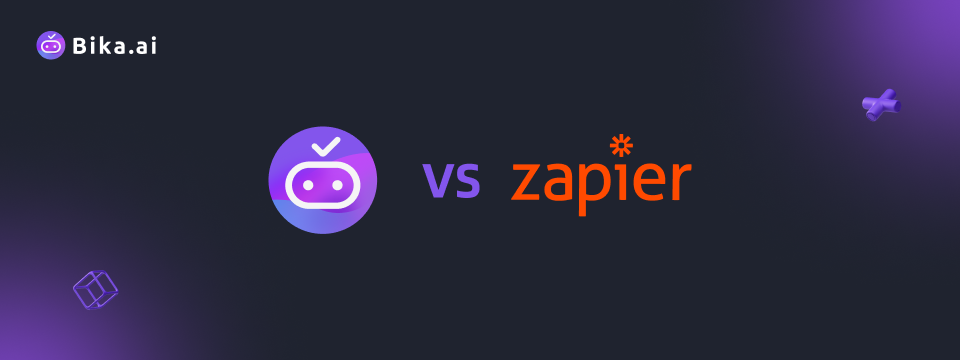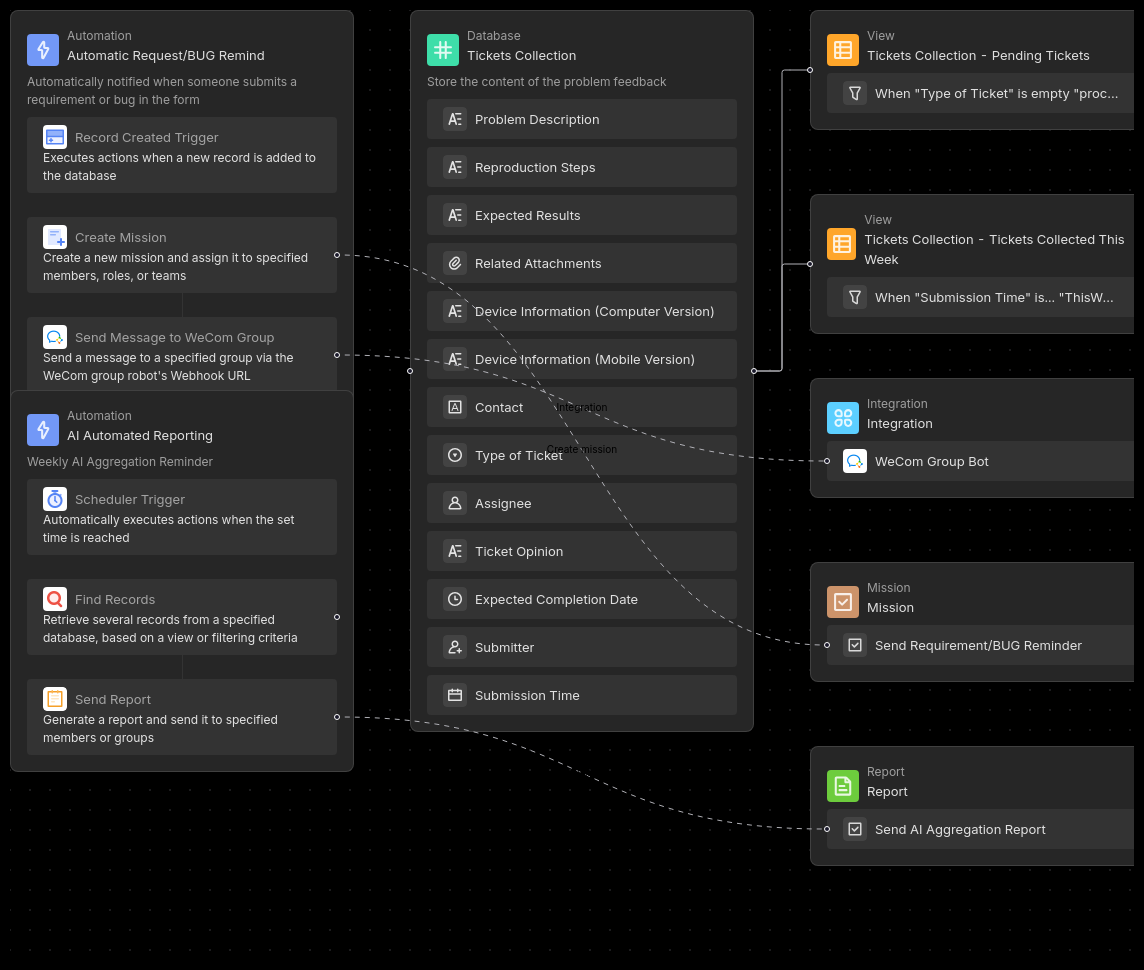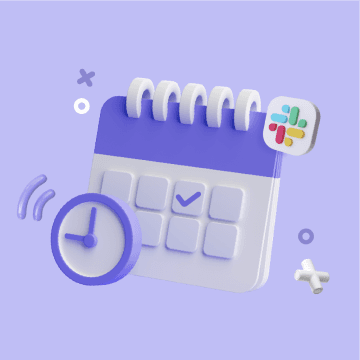
When it comes to submitting bug reports, many teams find themselves in a dilemma. Should they rely on the established Zapier or explore the emerging contender, Bika.ai? This blog takes a deep dive into the features, benefits, and practicalities of both tools to help you make an informed decision.
Zapier has long been a go-to for automating tasks between different apps. However, it's not without its flaws.
One of the major drawbacks is the separation of its automation and database. This disjointed setup can make workflows clunky and confusing. Managing data and automating processes isn't as seamless as one would hope.
The pricing structure of Zapier can also add up quickly. With separate costs for Tables and automation features, it can become expensive, especially when compared to more integrated options.

Bika.ai is an Proactive AI Automation Database that offers a fresh perspective on workflow automation.
It seamlessly integrates repetitive tasks across marketing, sales, and project management, allowing you to focus on strategic initiatives.
Bika.ai stands out with its proactive approach. Tools actively reach out to users, minimizing the need for constant manual input and significantly enhancing productivity.
It also offers a range of plug-and-play templates, complete with pre-filled content and detailed guides. This makes the setup process a breeze, even for those new to automation.
| Feature | Zapier | Bika.ai |
|---|---|---|
| Pricing | Automation starts at $19.99/month + Database starts at $20/month | Starts at $9.99/month per seat |
| Automation per Month | Starts at 750 tasks/month | Starts at 30,000 runs/month |
| Database Integration | Database separates from automation, additional cost | Integrated visual database with automation |
| Maximum Records | 500,000 records for the highest plan | 1,500,000 records for the highest plan |
| Tables Offered | Up to 50 tables in the highest plan | Unlimited tables |
| Templates | Templates without pre-filled content | Plug-and-play templates with pre-filled content and detailed guides |
| Customization | Limited by app connections and plan limits | Extensive customization with API-first design |
| Integration | Over 6,000 apps | Over 6,000 apps through integrations with Zapier, Make, Pabbly, and others |
| Data Handling | Limited field types and views | 38 field types and 13 node resources |
| Proactive Automation | None | Proactive AI that manages and schedules tasks |
Zapier's separation of database and automation leads to a fragmented user experience. Complicated workflows and separate pricing for different features can be a headache.
Bika.ai, on the other hand, provides a unified environment. It combines a scalable database with integrated AI automation, offering a seamless solution for data analysis and complex workflow management.
Zapier's database has limitations, especially in terms of the number of tables and records it can handle. Performance issues can arise as you approach its limits.
Bika.ai's Team plan supports unlimited tables and a much higher number of records. With 38 field types and 13 node resources, it's better equipped for handling diverse and large amounts of data.
Zapier may fall short in proactively managing projects and seeking user input.
Bika.ai actively engages with users, providing regular updates, suggestions, and AI-driven reports, reducing the need for manual oversight.
Zapier's templates require users to start from scratch with configurations and lack pre-filled content for guidance.
Bika.ai's templates come with clear README guides, architecture diagrams, and a release history. They also support publishing and sharing, facilitating collaboration within teams.
Rather than choosing one over the other, Bika.ai can seamlessly integrate with connectors like Zapier, expanding its functionality and customization options.

Automating the submission of bug reports brings several significant benefits to team collaboration efficiency.
It leads to increased efficiency by streamlining the process and reducing the time spent on manual tasks.
It saves valuable time that can be redirected towards more strategic activities.
It reduces the likelihood of errors, ensuring more accurate and reliable reporting.
The customization options allow teams to tailor the process to their specific needs.
It provides convenience by automating repetitive steps and offering real-time updates.
And it can result in cost savings by optimizing resources and reducing the need for additional tools or personnel.
This value is especially pronounced with Bika.ai's AI Project Issues and Tickets templates.

Using Bika.ai's template is straightforward.
First, install the template into your Bika Space. You can install it multiple times if needed for multiple projects.
Next, enter new feedback through the provided form. The submitted data is automatically recorded in the database.
Configure the automation tasks to meet your specific requirements.
Test the automation tasks to ensure they function as expected.
Finally, enable the tasks and let the automation take over, managing project issues, tickets, requirements, and bugs seamlessly.
Switching from Zapier to Bika.ai is a simple process.
Start by assessing your existing workflows in Zapier and identifying how they can be replicated or improved in Bika.ai.
Register for Bika.ai and explore its template library to find suitable automations.
Export your data from Zapier Tables in a CSV or Excel format and import it into Bika.ai to start benefiting from its advanced features immediately.
In conclusion, when it comes to submitting bug reports and managing project issues, Bika.ai presents a compelling alternative to Zapier. With its integrated features, proactive automation, and cost-effective pricing, it's worth considering for teams looking to enhance their efficiency and productivity.



Coming soon



